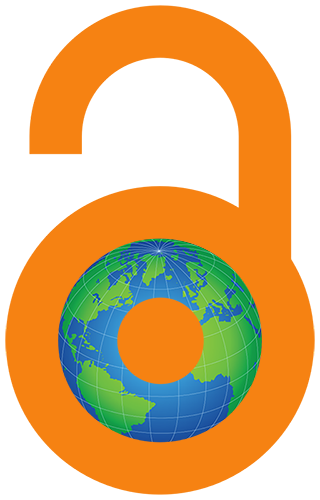
This is a guest post in celebration of Open Access Week 2016 by Mary Leverance, Preservation, Conservation, and Teaching Coordinator for the University Libraries and Center for Advanced Spatial Technologies

Did you know that if you have a smartphone and use the map’s location finder or tag yourself at a location, you’re participating in technology available through open access? Millions of citizens create and volunteer all kinds of geographic information every day through access to tools that pinpoint real world locations on a map in real time.
The tool most frequently accessed is GPS (Global Positioning System) technology. GPS was made available to the public in 1995; the U.S. owns and operates it, and has opened the system to the entire world. In the most basic terms, 24 satellites that orbit Earth transmit radio signals to GPS receivers, which record the time and determine the latitude and longitude of a device containing a receiver. This location data can be geotagged, meaning that precise location metadata can be added to photos, videos, text messages, and websites. As of 2015, almost two-thirds of Americans carry smartphones enabled with (you guessed it) GPS receivers.
Web-based geocoding services are another tool used to link information to a web-based map. Enter a list of addresses into a geocoder (two open access options are OpenAddresses or OpenGeocoding), and the geocoder assigns latitude and longitude values for the addresses. These values can then be mapped online using a product like Google Maps or Esri Story Maps, which provide a platform for sharing geographic information.
Most people and businesses are volunteering geographic information with their friends or the wider public on social media, and due to the prevalence of Wi-Fi and broadband internet, sharing information is easy. Basic geospatial information is typically shared within social networks through geotags, but there are also open access containers for volunteered geographic information (VGI) which is usable by anyone.
Volunteered Geographic Information (VGI) is a relatively new term, coined by Michael Goodchild in a 2007 article titled “Citizens as sensors: the world of volunteered geography.” His view is that VGI is driven by human sensors who produce user-generated content, collective intelligence, and asserted information. At its core, VGI is information at a specific geographic location that is digitally captured, assembled, and shared by a human sensor. Other terms similar to VGI are crowdsourcing and citizen science, although there is debate about whether they are truly in the same category as VGI.
By referring to this information as volunteered, it’s implied that a person has willingly offered it to any other person who would like to partake of it, and the volunteer does not expect remuneration for providing it. The act of volunteering indicates the information creator does not feel the need to protect the information, and therefore makes it publicly accessible through Web 2.0 technologies, such as social media, Web apps, wikis, etc.
The following are examples of online VGI resources; they are open to anyone and rely on contributions from users. Volunteered information can impact almost anything, including public affairs, environmental issues, policy making, humanitarian problems, historical perspectives, and responses to natural disasters. Find one of interest and consider volunteering your own geographic! (Note: resource descriptions are taken from the resource websites.)
Wikimapia: A multilingual open-content collaborative map, where anyone can create place tags and share their knowledge.
Google Map Maker: Improve the map of places that matter to you. Update the actual map as seen by millions of users on Google Maps.
Geonode: By combining collaboration found in social networks with specialized geospatial tools, GeoNode makes it easy to explore, process, style, and share maps and geospatial data.
List of citizen science projects that use VGI contributions to assist in scientific research, with projects as varied as wildlife tracking and sightings, astronomy, botany, ecology, and weather.
Historypin: A free platform where people can collaborate to create shared archives about their local community. Anyone can pin photos, videos or sounds to the Historypin map.
Ushahidi: A non-profit tech company that develops free and open source software for information collection on disaster situations, visualization and interactive mapping.
OpenStreetMap: Built by a community of mappers that contribute and maintain data about roads, trails, cafés, railway stations, and much more, all over the world.
Geographic information can be recorded at any time, any place, and by any number of people, and then shared widely with others. Coming soon: a post discussing the various motivations for volunteering geographic information!
